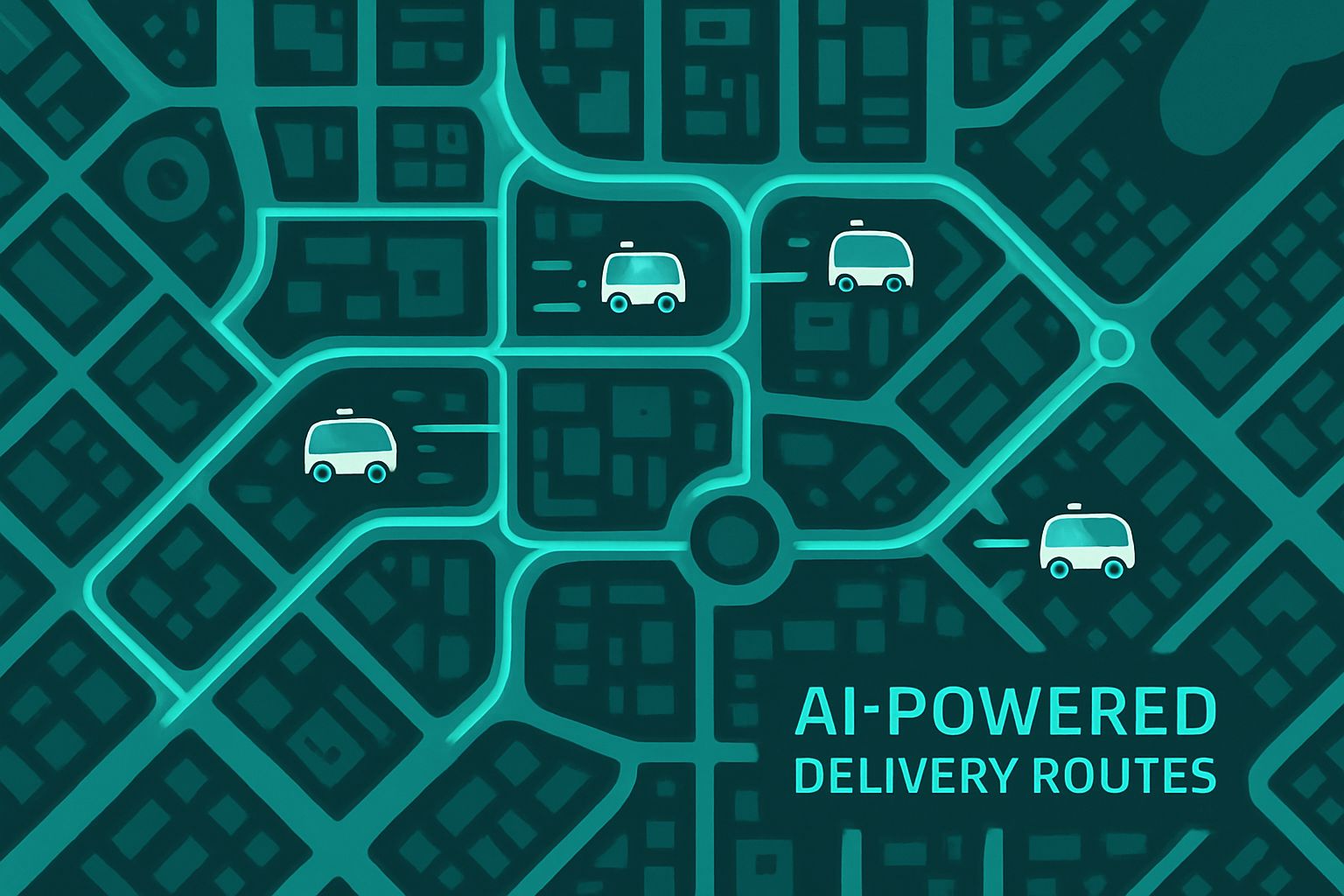
AI CERTS
3 hours ago
Autonomous Delivery Fleets Transform Urban Logistics

Several high-profile deployments confirm the transition toward scaled operations. Starship claims nine million completed trips and plans twelve thousand robots by 2027. Meanwhile, Waymo tests driverless vans across ten additional cities under tight human supervision. Additionally, Serve Robotics has filed plans for mass production after unit-cost improvements. Collectively, these moves signal a pivotal inflection for urban logistics.
Autonomous Delivery Market Growth
Market researchers paint an ambitious picture. Precedence Research pegs the autonomous last-mile segment at USD 6.6 billion today. Furthermore, the firm forecasts USD 44 billion by 2034, implying 23 percent compound growth. In contrast, Allied Market Research projects an even steeper curve toward USD 144 billion by 2033. Nevertheless, all studies agree on sustained double-digit expansion.
Such growth depends on coordinated Logistics, reliable software, and supportive regulation. Therefore, capital continues to flow toward hardware upgrades, sensor suites, and orchestration stacks. Investors prioritize companies that can prove repeatable unit economics in varied weather and dense streets.
Forecasts show money chasing scale, but assumptions remain fluid. However, deployment realities will ultimately validate the projections.
Autonomous Delivery revenue stems from delivery fees, hardware leasing, and data services. Additionally, value-added Logistics integrations like inventory syncing create sticky partnerships. Subscription models for apartment buildings bundle Autonomous Delivery with secure locker access and concierge tracking.
Urban Fleet Momentum Rise
Scaled pilots now operate beyond closed campuses. Starship’s sidewalk robots roam European capitals and multiple U.S. suburbs. Meanwhile, Nuro pods deliver groceries in Houston under exemption permits. Furthermore, self-driving vehicles from Waymo handle mixed passenger and parcel missions during off-peak hours.
Fleet sizes remain modest, yet orchestration software lets each remote supervisor handle up to 50 units. Consequently, operating costs fall as autonomy rates climb. Additionally, hybrid teleoperation covers edge cases such as blocked sidewalks, vandalism, and sudden weather shifts.
Urban agencies issue temporary permits while studying sidewalk safety data. In contrast, some cities restrict hours or geofence sensitive districts. These mixed policies create patchy expansion maps that require adaptive Routing strategies and careful stakeholder engagement.
Fleets are growing, but governance and infrastructure gaps slow geographic reach. Next, we examine technical coordination breakthroughs enabling larger deployments.
Coordination Tech Advances Today
Effective coordination separates demonstrations from profitable networks. Researchers now combine centralized planners with decentralized graph neural agents. Moreover, multi-agent reinforcement learning optimizes task allocation, energy scheduling, and collision avoidance simultaneously.
Recent studies show hybrid architectures improve throughput by double digits versus naive decentralization. Consequently, companies integrate these models into production stacks. Serve Robotics reports more than 80 percent autonomy in select zones following software updates.
Advanced algorithms also enhance Routing under uncertain traffic and battery levels. Additionally, attention mechanisms let agents anticipate pedestrian flows, boosting curb efficiency. Self-Driving Vehicles leverage the same cloud APIs, ensuring smooth multimodal handoffs.
Companies designing Autonomous Delivery stacks favor containerized microservices that permit rapid algorithm swaps without halting operations. Seamless Logistics signals require millisecond latency, pushing operators to deploy regional edge nodes.
Algorithmic gains raise service reliability and fleet density. However, regulatory hurdles still threaten scaling momentum.
Regulatory Patchwork Pressures Grow
Jurisdictional complexity remains the toughest barrier. States often pre-empt cities on road automation while municipalities govern sidewalk robots. Therefore, operators face a mosaic of speed limits, insurance requirements, and data-sharing clauses.
U.S. DOT issues voluntary guidance, yet permits still hinge on local hearings and pilot evaluations. Consequently, companies dedicate entire teams to compliance tracking and lobbying. Autonomous Delivery appears headline-friendly, but one restrictive ordinance can halt expansion overnight.
Public concerns center on disability access, sidewalk congestion, and job displacement. Moreover, labor groups campaign for human oversight mandates. Negotiations increasingly tie licenses to transparent safety reporting and equitable service coverage.
Policy uncertainty adds time and cost to every rollout. Nevertheless, clear data and community engagement can unlock broader approvals. Understanding benefits and risks helps shape those conversations.
We explore those trade-offs next.
Benefits And Persistent Concerns
Advocates cite strong upside. Electric robots cut tailpipe emissions and reduce van traffic during peak congestion. Moreover, merchants gain 24/7 fulfillment without paying surge wages.
Key advantages include:
- Unit cost reductions of up to 40 percent, according to company filings.
- Service times under 30 minutes across three pilot cities.
- Lower collision energy than cars, improving pedestrian safety metrics.
In contrast, critics highlight unresolved challenges. Robots can block mobility aids when sidewalks narrow. Additionally, snow, heavy rain, or vandalism still trigger remote takeovers. Self-Driving Vehicles face parallel scrutiny over traffic flow disruption and parking rights.
Robust data transparency may ease fears. Consequently, some operators publish incident dashboards and intervention ratios monthly. Consumer surveys reveal higher repeat purchases when Autonomous Delivery options appear during checkout.
Stakeholders weigh measurable gains against social costs. Therefore, continuing research receives heightened interest.
Strategic Actions For Leaders
Executives planning Autonomous Delivery rollouts should begin with limited geofenced corridors and clear service-level targets. Collaboration with city planners, disability advocates, and labor councils builds political capital early. Moreover, staged metrics sharing demonstrates accountability.
Technology officers must integrate modular orchestration layers that support both ground robots and Self-Driving Vehicles. Hybrid cloud architectures ease scaling while allowing rapid model retraining. Furthermore, consistent Routing APIs simplify partner integration across retail channels.
Professionals can enhance operational mastery with the AI+ Supply Chain™ certification.
Strategic alignment across technology, policy, and partnerships accelerates sustainable growth. Consequently, firms that execute now will shape competitive norms. Marketing teams should highlight sustainability gains achieved through Autonomous Delivery to win eco-conscious customers.
Autonomous Delivery continues shifting from novelty to infrastructure. Market forecasts show steep growth, yet profitability hinges on orchestration, safety, and regulatory trust. Meanwhile, advances in multi-agent learning and cloud control push technical ceilings higher. Nevertheless, sidewalk space, labor impact, and policy fragmentation demand proactive management. Therefore, leaders should pilot, measure, and iterate with transparent metrics. Finally, earning targeted credentials like the AI+ Supply Chain™ certification equips teams to navigate this rapidly evolving landscape.



